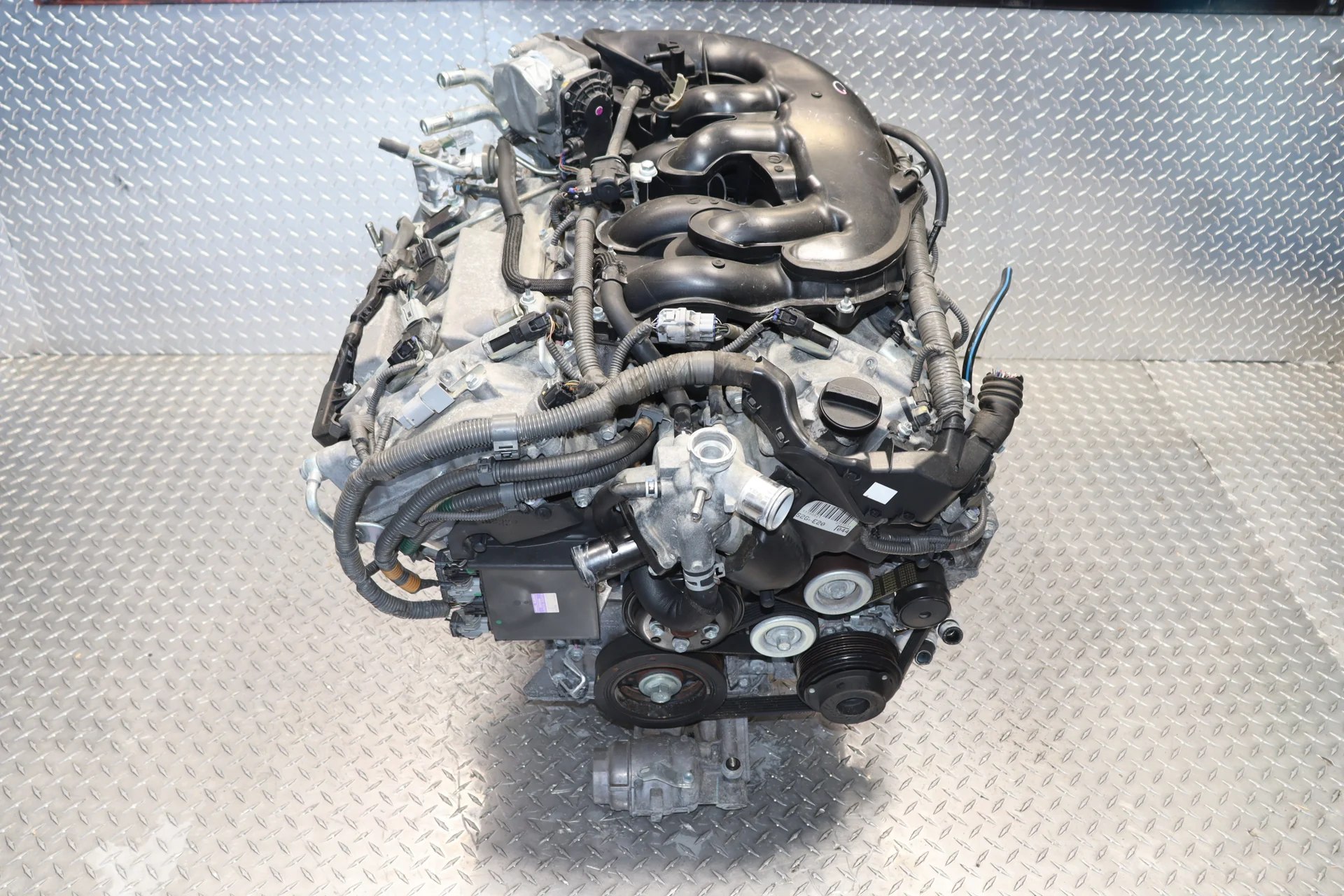Subtotal: $2,800.00
The 2GR-FE/FSE/FKS 3.5 V6 Engine: Specs, Applications, and FAQs
Toyota’s 2GR family of 3.5-liter V6 engines is one of the most versatile and widely used engine platforms developed by Toyota Motor Corporation. Introduced in the mid-2000s, these engines have powered a wide range of Toyota and Lexus vehicles, offering an excellent balance of performance, durability, and efficiency.
This article will cover:
-
Detailed specifications of the 2GR-FE, 2GR-FSE, and 2GR-FKS engines.
-
Key applications and vehicles using these engines.
-
Frequently asked questions about performance, reliability, and maintenance.
1. Overview of the 2GR Engine Family
The 2GR engine series belongs to Toyota’s GR family of V6 engines. The 3.5L V6 layout has been adapted in several forms to suit different vehicle categories — from sedans and SUVs to sports cars and luxury vehicles.
-
2GR-FE: Port-injected, widely used in Toyota and Lexus sedans, minivans, and crossovers.
-
2GR-FSE: Direct-injected version, offering more power and efficiency, primarily in Lexus models.
-
2GR-FKS: Combines Toyota’s D-4S (direct + port injection) with VVT-iW (Variable Valve Timing – Intelligent Wide), meeting stricter emissions while enhancing performance.

2GR-FE/FSE/FKS 3.5 V6 Engine
2. Technical Specifications
🔧 2GR-FE (Port Injection)
-
Displacement: 3.5L (3456 cc)
-
Bore × Stroke: 94 mm × 83 mm
-
Compression Ratio: 10.8:1
-
Fuel System: Multi-port fuel injection
-
Valve Train: DOHC, 24-valve, Dual VVT-i
-
Power Output: ~268–296 hp (depending on model)
-
Torque: ~336–362 Nm (248–267 lb-ft)
🔧 2GR-FSE (Direct Injection)
-
Displacement: 3.5L (3456 cc)
-
Bore × Stroke: 94 mm × 83 mm
-
Compression Ratio: 11.8:1
-
Fuel System: D-4S direct fuel injection
-
Valve Train: DOHC, 24-valve, Dual VVT-i
-
Power Output: ~306–318 hp
-
Torque: ~370–380 Nm (273–280 lb-ft)
🔧 2GR-FKS (Dual Injection + VVT-iW)
-
Displacement: 3.5L (3456 cc)
-
Bore × Stroke: 94 mm × 83 mm
-
Compression Ratio: 11.8:1
-
Fuel System: D-4S (direct + port injection)
-
Valve Train: DOHC, 24-valve, Dual VVT-iW
-
Power Output: ~295–301 hp
-
Torque: ~356–362 Nm (262–267 lb-ft)
3. Vehicle Applications
The 2GR series has been installed in numerous Toyota and Lexus vehicles across different markets.
🚗 Toyota Applications
-
2GR-FE:
-
Camry (XV40, XV50)
-
Avalon
-
Highlander / Kluger
-
Sienna
-
RAV4 V6 (specific markets)
-
Aurion
-
Estima (Previa)
-
Mark X ZiO
-
-
2GR-FKS:
-
Highlander (2017+)
-
Tacoma (2016+)
-
Sienna (2017+)
-
Camry (XV70, V6 variants)
-
🚙 Lexus Applications
-
2GR-FE:
-
RX 350
-
ES 350
-
-
2GR-FSE:
-
IS 350
-
GS 350
-
RC 350
-
Crown Athlete (Japan)
-
-
2GR-FKS:
-
RX 350 (2016+)
-
GS 350 (facelift models)
-
LS 350 (China, select markets)
-
4. Strengths and Reliability
-
Durability: Toyota’s V6 engines are known for longevity, often exceeding 300,000 km (186,000+ miles) with proper maintenance.
-
Smooth performance: Dual VVT-i and D-4S injection provide excellent throttle response.
-
Adaptability: Found in a wide range of vehicles, from family sedans to premium sports coupes.
-
Low NVH (Noise, Vibration, Harshness): Designed for quiet, smooth operation in luxury cars.
5. Common Issues
Like any engine, the 2GR series has some known issues:
-
Oil cooler hose leaks (early 2GR-FE models).
-
Carbon buildup in direct-injection variants (2GR-FSE, 2GR-FKS).
-
Water pump failures around 100,000 km.
-
Vacuum line and gasket wear over time.
Routine maintenance and high-quality oil help minimize these problems.
6. Frequently Asked Questions (FAQs)
Q1: What is the difference between 2GR-FE, 2GR-FSE, and 2GR-FKS?
-
The FE uses port injection, the FSE uses direct injection, and the FKS uses Toyota’s D-4S (direct + port injection) with advanced valve timing for better emissions and efficiency.
Q2: Which cars have the most powerful version of the 2GR engine?
-
The Lexus IS 350 and GS 350 (2GR-FSE) have some of the most powerful variants, producing over 306 hp.
Q3: How reliable is the 2GR engine family?
-
Extremely reliable with proper care. Many owners report 200,000+ miles with only routine maintenance.
Q4: Can the 2GR engine handle performance tuning?
-
Yes, particularly the 2GR-FE and FSE variants. Aftermarket turbo and supercharger kits exist, but internals are best suited for moderate boosts without reinforcement.
Q5: What oil type is recommended for 2GR engines?
-
Toyota recommends 0W-20 synthetic oil for most modern 2GR engines, though earlier FE variants may use 5W-30 depending on the region.
Q6: Is the 2GR still in production?
-
Yes, the 2GR-FKS is still in production and used in models like the Toyota Tacoma, Sienna, and Lexus RX.
7. Conclusion
The 2GR-FE, FSE, and FKS 3.5L V6 engines remain some of Toyota’s most successful powerplants, balancing power, efficiency, and long-term reliability. Their use across Toyota and Lexus lineups for nearly two decades demonstrates their versatility and engineering excellence.
For buyers looking at vehicles equipped with the 2GR engine — whether it’s a family-friendly Toyota Sienna, a sporty Lexus IS 350, or a rugged Toyota Tacoma — they can expect smooth performance and Toyota’s signature reliability.





 1hdt engine for sale
1hdt engine for sale